Spotlight: SIT Panama — Tropical Ecology, Marine Ecosystems, and Biodiversity Conservation
Posted in News Story | Tagged Language Learning, Latin America, National Hispanic Heritage Month, Panama, Semester Program, SIT, study abroad
Written by Jordan Guzzi (CAS ‘ 26) and photos taken by John Matuszewski (SFS ’25)
As we celebrate National Hispanic Heritage Month, we’re spotlighting study abroad experiences that immerse students in rich histories, cultures, and communities of Latin America. To close out this month’s celebration, we are featuring a recent alum and his experience with SIT Panama: Tropical Ecology, Marine Ecosystems, and Biodiversity Conservation, a program that explores not only Panama’s incredible biodiversity, but also its deep cultural heritage and global connections.
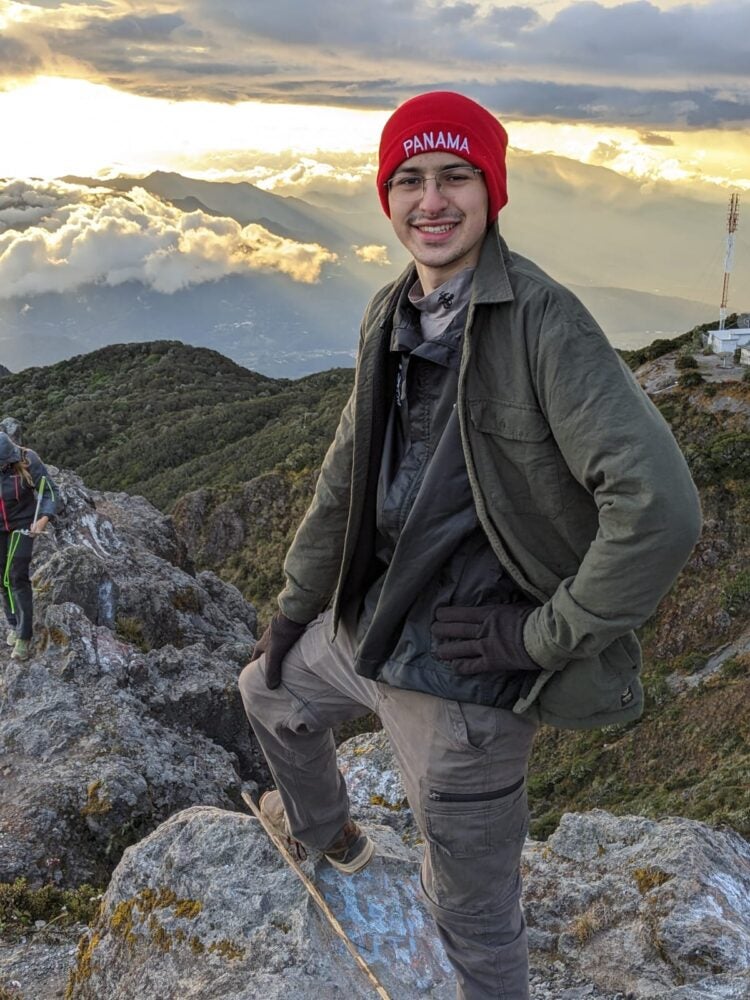
John Matuszewski is a recent Georgetown alum (SFS ‘25) who studied Science, Technology, and International Affairs with a concentration in Energy and Environment, along with minors in Biology and History. He also studied abroad at the University of Sydney (Spring Friendly) during his time at Georgetown.
John (pictured here), stands in front of Volcán Barú, Panama’s tallest mountain and active stratovolcano where you can see both the Atlantic and Pacific Oceans at once. The hike requires more elevation traversal than Mt. Fuji does from Fuji Subaru Line 5th station, the typical base camp for that hike.
Learn About SIT Panama: Tropical Ecology, Marine Ecosystems, and Biodiversity Conservation
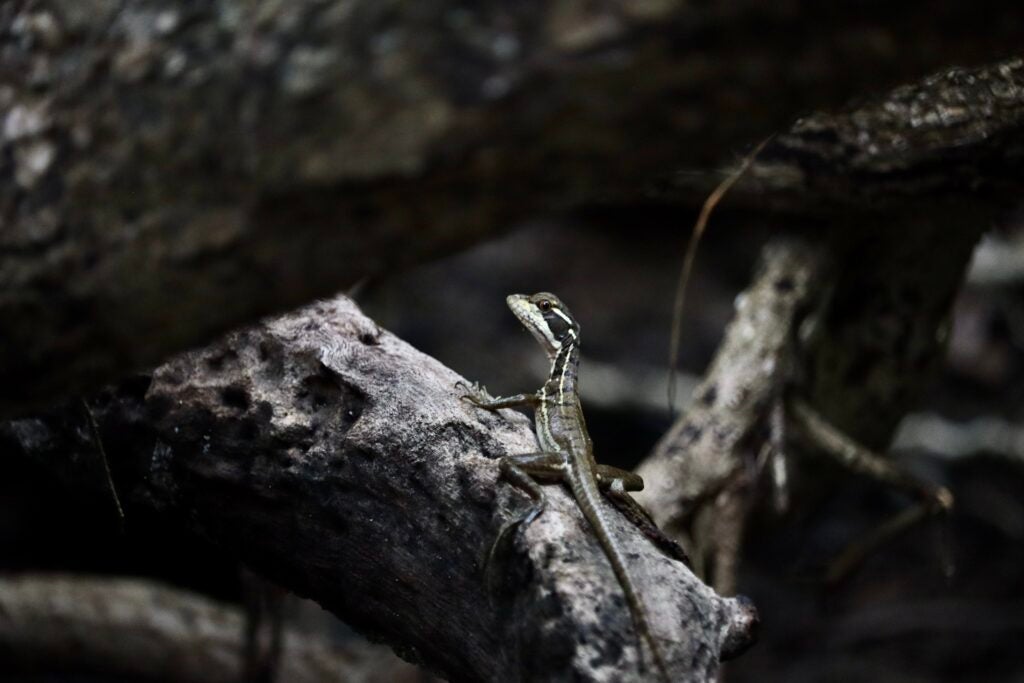
This information was taken directly from the SIT Panama website. Visit the SIT Panama website for more details about this study abroad program.
“Explore rainforests, coral reefs, highland canopies, and coastal mangroves as you study tropical conservation, marine ecosystems, and ecology. Panama has some of the world’s most biodiverse and complex ecosystems, from highland cloud forests to Caribbean coral reefs. You will conduct seven weeks of field studies in five unique settings in Panama and Costa Rica. Learn how to estimate forest biodiversity, evaluate coral reef health, calculate mangrove carbon, identify tropical fish species, and quantify neotropical mammal abundance among other skills.
In Panama City, one of the leading bases for international NGOs and the United Nations, you’ll explore conservation topics such as sustainable agriculture, Indigenous resource use, and ecotourism. You will also conduct four weeks of independent, original field research on a topic of your choice. Your program also includes four homestays during which you will learn about urban and rural life, experience local culture, and examine the environmental challenges these communities face. In addition, you will develop the Spanish language skills needed to discuss ecological issues and conduct field research through classroom learning, cultural immersion, homestays, fieldwork, and excursions.“
Q: Why did you choose Panama as your study abroad country?
I wanted to use my Spanish knowledge I had built up to make sure it didn’t go to waste and improve my Spanish. I also had never been to a jungle, and wanted to see the fascinating landscapes, flora, and fauna present in Panama. Panama punches far above its weight in biological megadiversity, since it’s a geologically new volcanic isthmus that only arose to connect the species between North and South America roughly 3 million years ago (about 1/20th of the age of the most recent dinosaurs). So, it has all the cool stuff from both continents still diffusing through that small chokepoint, and since it’s so small, it acts as a migration corridor for millions of birds and insects that can’t fly over water each year.
Q: What are you up to now?
I graduated in May. Right now I work as an English teacher in Matsuyama, Japan. Before that, I was an intern at NASA helping train park rangers on how to teach the public about earth and space science communication. I would say the SIT Panama program gave me an enormous amount of confidence to both continue work in science and live abroad full-time.
Q: How were you able to build connections with people in your host community? Is there something special that you’ve learned from your host family?
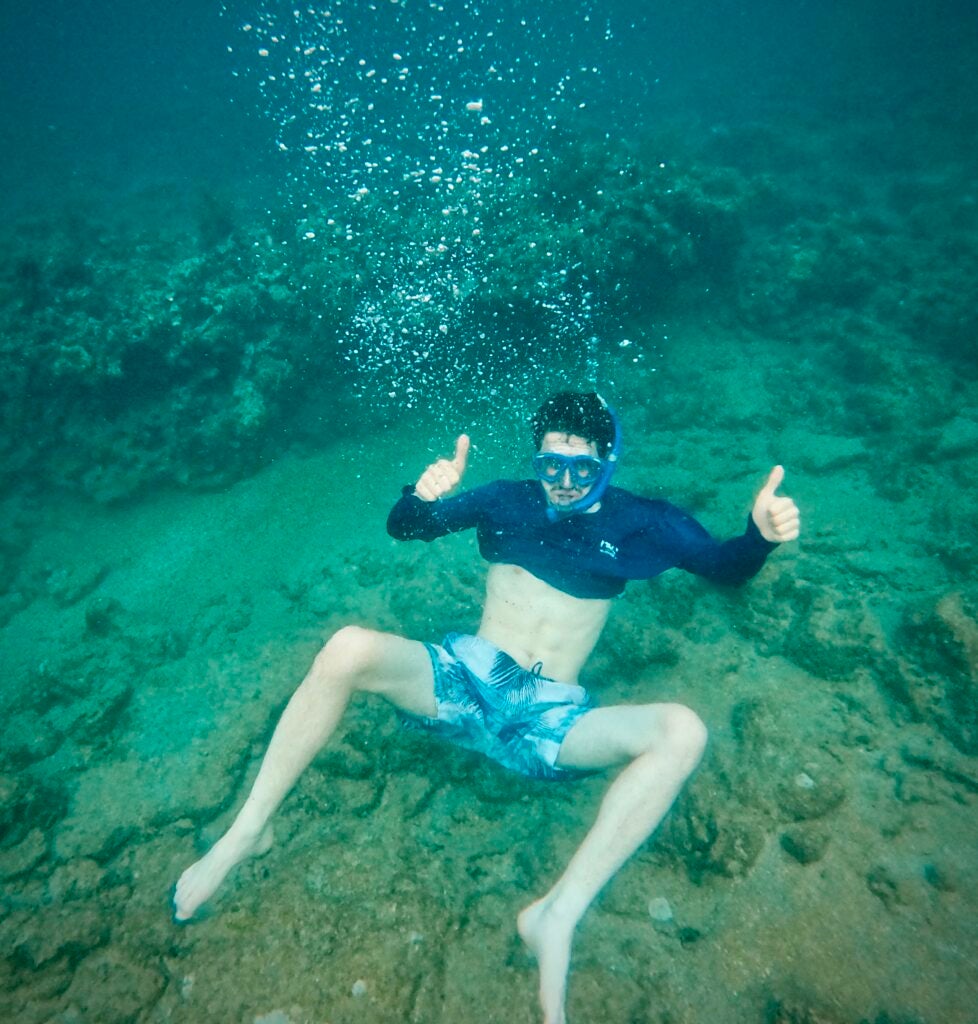
SIT Panama’s program is very go-go-go and transient, so I didn’t get much time to get to know very many people, because I was hightailing it across the country every few days. But, there were certain Panamanian professors and research mentors with whom I spent considerable time that proved to be humble, intelligent, and extraordinary people whom I learned a lot from and have a lot of respect for. If they ever get the opportunity to read this, I hope Dr. Osvaldo Jordán and Dr. Eric Manzané both understand their impact.
I did spend a good amount of time with my host families. I think you have to stay with Panamanians to understand a little bit what it’s like to live like a Panamanian. At first, I thought they were a little noisy; my host father would often play loud action movies late into the night next to my room and my host mom watched telenovelas at the same volume. Sometimes my host father would whip out the bongos and play to the beat of the TV while I was trying to wind down. At the time I was somewhat annoyed, but soon I came to appreciate the thirst for life Panamanians possess and their love of music and dance.
Q: What local foods or drinks became favorites of yours while you were abroad? Did you try any dishes that had a special cultural or historical significance?
There were many foods I really liked, and ones I was surprised to try. I remember drinking a sweet corn and milk drink that was popular there. I tried some fresh strawberries and cream while staying in Cerro Punta, Chiriquí. They were a famous food from the area and were, of course, delicious.
Q: What did you learn about the history of your host country, and how was it reflected in daily life? Did you visit any historical sites or museums that deepened your understanding of Hispanic and Latinx heritage?
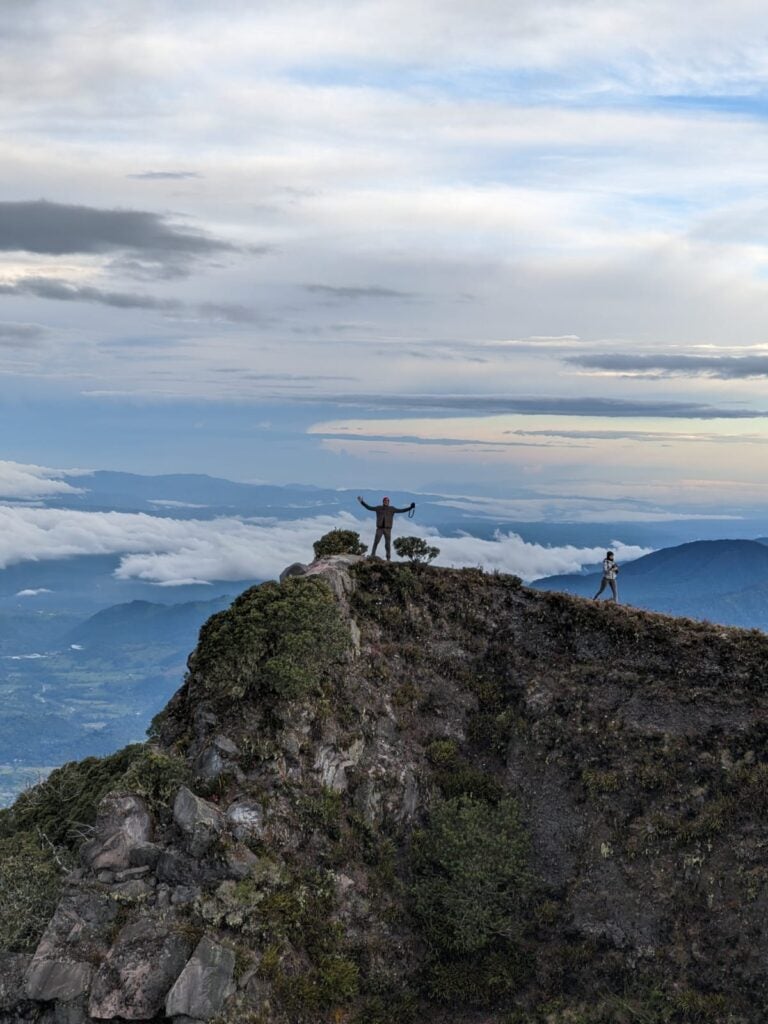
I learned a lot about the history of Panama while staying there, beyond that of the Panama canal. Panama is a fascinating case in international development, and my interest in it led me to choose that subject as the subject of my independent study project, or ISP. You see many influences from history on its culture, people, architecture, and governmental structures. First, there are cultural items of indigenous heritage, such as Mola and traditional dress. There are also Spanish influences I could see, such as the gun emplacements at Portobelo, formerly one of the richest cities on Earth thanks to its harbouring of Spanish gold plundered from the Americas. American influence also played and continues to play a large role in the development of Panama City, from the American government’s construction of the La Ciudad de Saber neighbourhood to its levelling of the El Chorrillo neighbourhood during the 1989 invasion. Panama has a fascinating and diverse mix of infrastructure and culture from various historical influences.
I think visiting history museums really opened my eyes to the diversity of Hispanic cultural and ethnographic origins. The US certainly isn’t the only immigrant nation in the world, but before living in Panama, I rather naively thought of America as uniquely diverse relative to the rest of the world. Although I still love the multinational influences of my nation of origin, absorbing more information from Panamanian history helped me look at it more objectively in a global context.
Q: How did your experience abroad shape your perspective on Hispanic and Latinx contributions globally? Was there a moment or memory that best captured the spirit of your time abroad?
I think I have a lot more respect for immigrants working to come to the United States. Panama is a land choke point between North and South America not just in terms of species migration and diffusion, but also in respect to human migration and diffusion. At border checkpoints I could see children and young families trying to scrap together the smallest amount of cash to earn enough to pay to move westward and northward. Many immigrants fly to Ecuador, where getting a visa is easy, and then begin the long trek north. Some pass through Panama’s Darien gap, a level 4 state department travel advisory zone, the equivalent rating of an active warzone, and a hostile and unforgiving jungle of disease, narco traffickers, and wildlife in Panama’s remote east. To see them weather that, and yet still have to cross hundreds of miles further north on trains, buses, and on foot, gives me a lot of sympathy for their plight of the refugees.
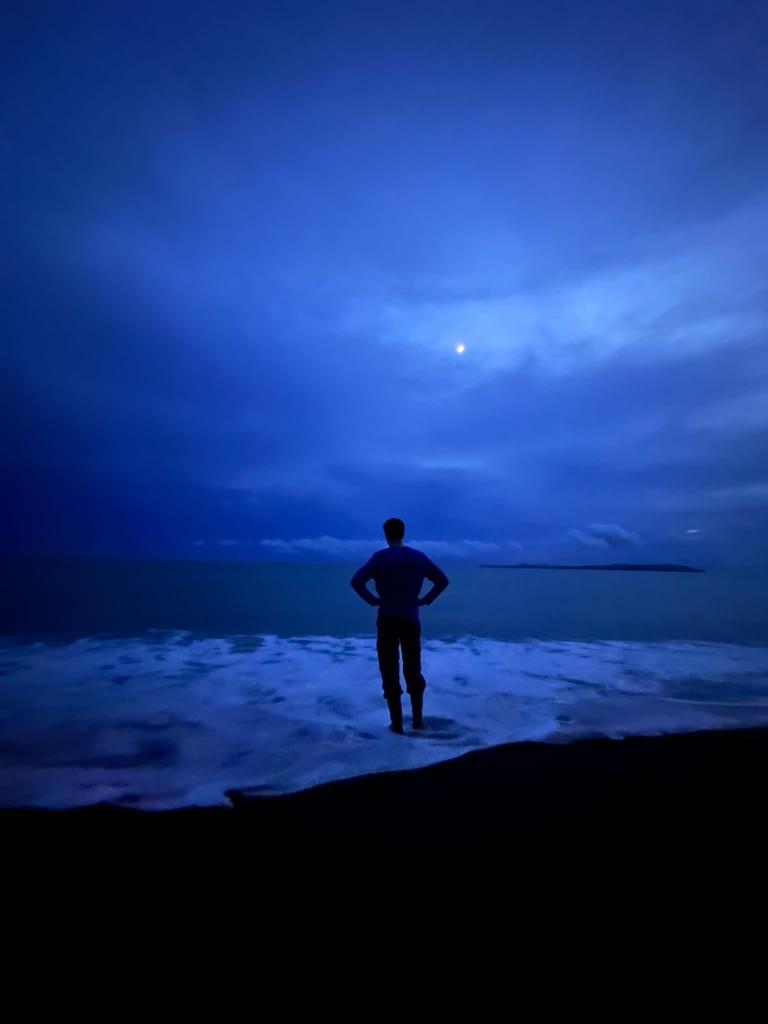
John’s story reminds us that studying abroad in Latin America offers more than breathtaking landscapes. It is an opportunity to engage with the living history, language, and cultural richness of the Hispanic world. During National Hispanic Heritage Month, we celebrate programs like SIT Panama that help students deepen their understanding of Hispanic and Latinx contributions across the globe.
Interested in studying abroad with SIT Panama, or with an SIT program elsewhere? To find out more, attend our Study Abroad 101! These comprehensive information sessions about the study abroad process are hosted multiple times throughout the week. We also encourage you to schedule a meeting with our SIT advisor to learn more about SIT programs and to see if SIT is a good fit for you. Check out our #TakeoverTuesday SIT Playlist on YouTube to see the daily lives of our SIT students abroad, and follow us on Instagram @guabroad to stay updated.
